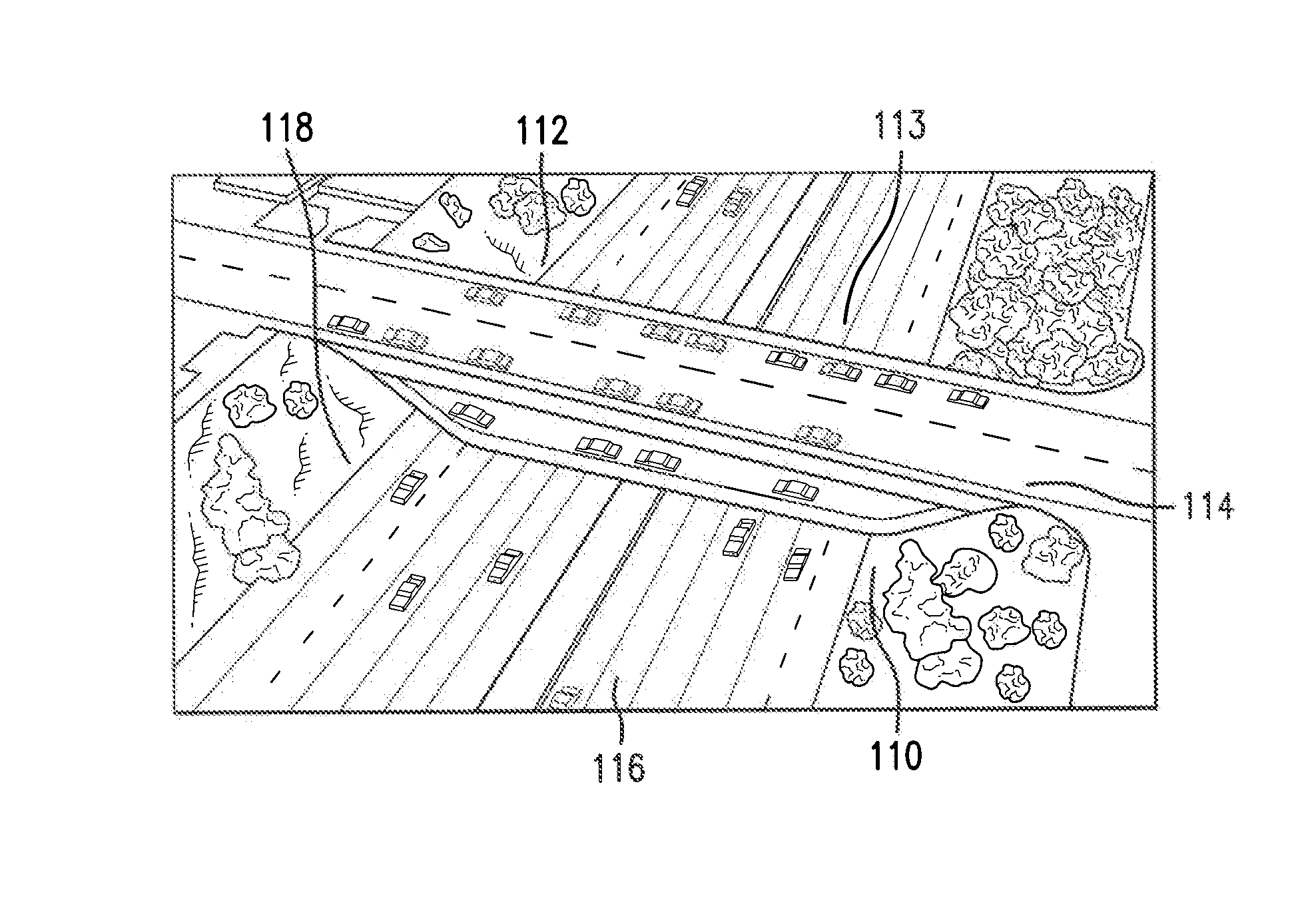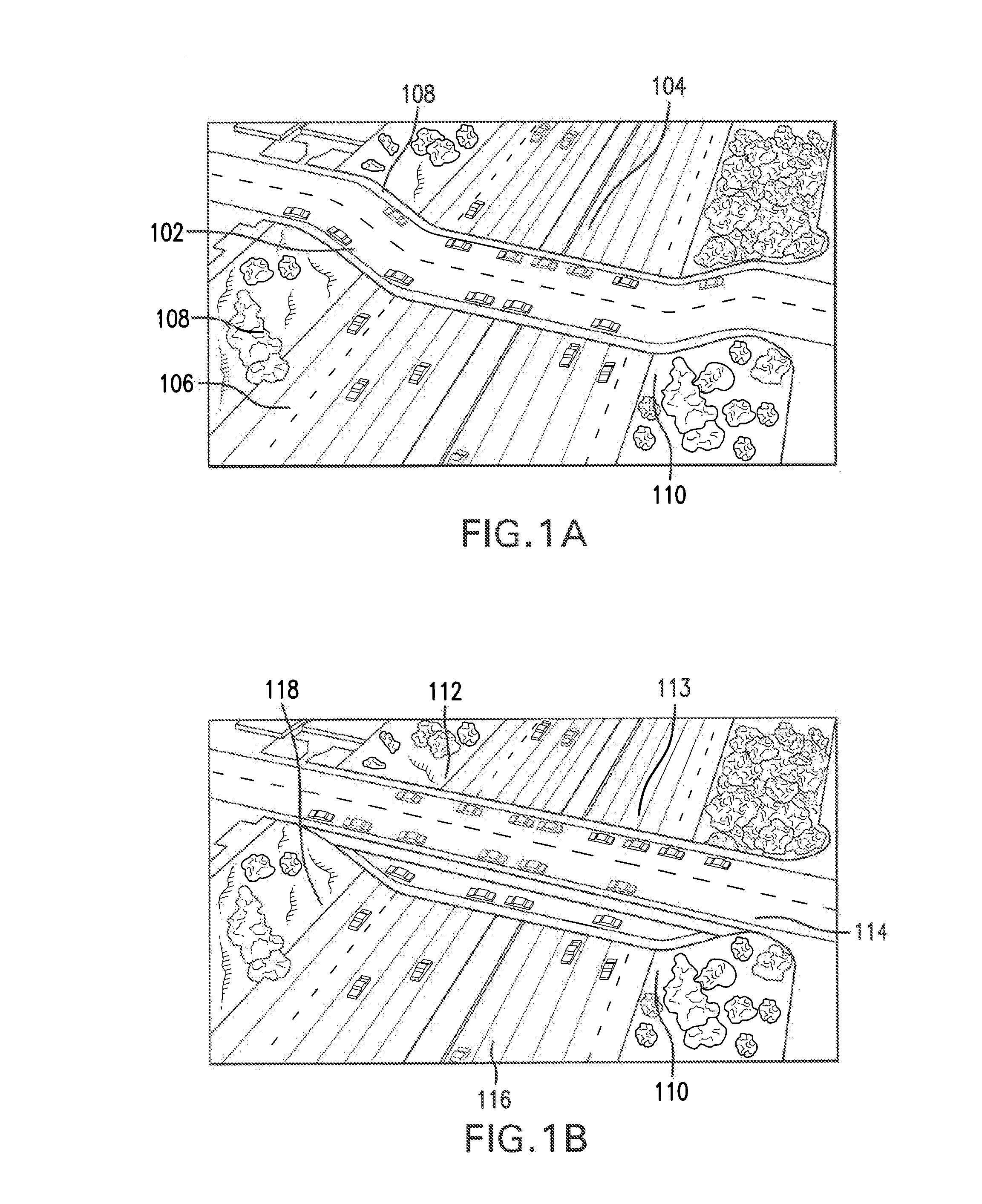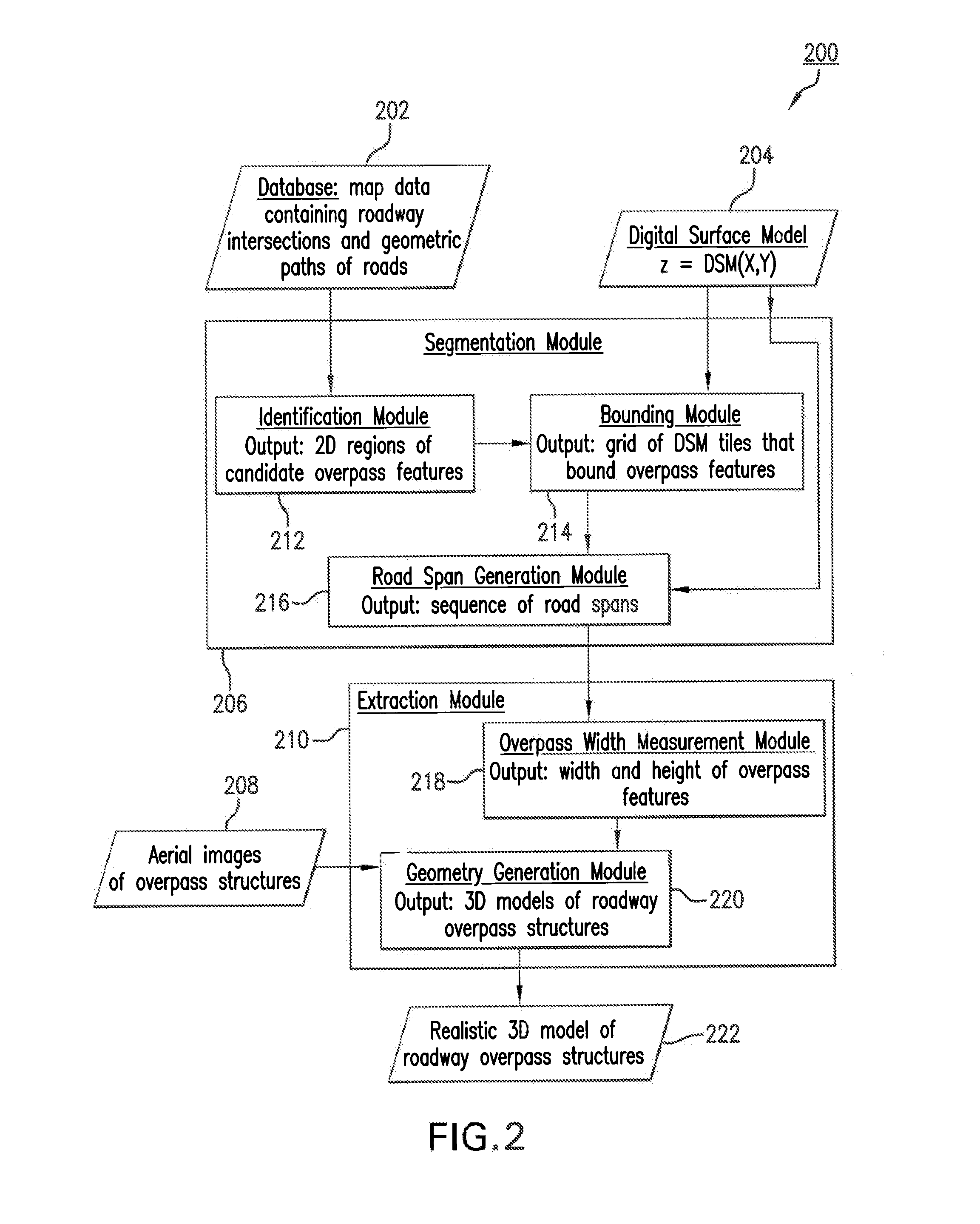Automated Overpass Extraction from Aerial Imagery
an aerial imagery and automatic extraction technology, applied in the field of automatic extraction of aerial imagery, can solve the problems of distorted composite image, inability to show features in the correct locations of composite images, and inability to accurately represent scale in composite images created by stitching together many images of the ground
- Summary
- Abstract
- Description
- Claims
- Application Information
AI Technical Summary
Benefits of technology
Problems solved by technology
Method used
Image
Examples
Embodiment Construction
[0022]This disclosure is directed to systems and methods for generating realistic three-dimensional models of roadway overpass structures by combining aerial images with a DSM. It is noted that reference in the specification to “one embodiment,”“an embodiment,”“an example embodiment,” etc., indicate that the embodiment described may include a particular feature, structure or characteristic, but not every embodiment may necessarily include the particular feature, structure or characteristic. Moreover, such phrases are not necessarily referring to the same embodiment. Further, when a particular feature, structure or characteristic is described in connection with an embodiment, it is submitted that it is within the knowledge of one skilled in the art to effect such structure, feature or characteristic in connection with other embodiments, whether or not explicitly described. Embodiments will be described with reference to the accompanying figures.
[0023]This disclosure is concerned with...
PUM
 Login to View More
Login to View More Abstract
Description
Claims
Application Information
 Login to View More
Login to View More - R&D
- Intellectual Property
- Life Sciences
- Materials
- Tech Scout
- Unparalleled Data Quality
- Higher Quality Content
- 60% Fewer Hallucinations
Browse by: Latest US Patents, China's latest patents, Technical Efficacy Thesaurus, Application Domain, Technology Topic, Popular Technical Reports.
© 2025 PatSnap. All rights reserved.Legal|Privacy policy|Modern Slavery Act Transparency Statement|Sitemap|About US| Contact US: help@patsnap.com



